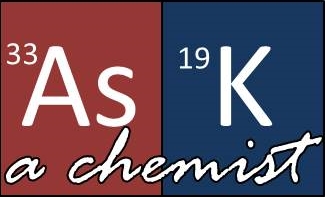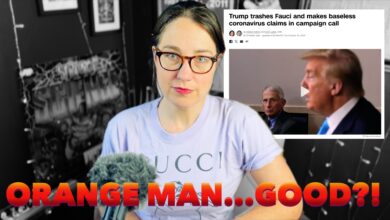#AskAChemist: What’s making up my make-up?

This week on Ask A Chemist…
I recently purchased bareMinerals’ liquid foundation ‘BARESKIN’ at Sephora. The package insert says it’s “formulated without” water, oil, or silicone. What the hell is in this stuff that makes it a liquid foundation?
My first answer to the friend that sent me this text was “unicorn tears”. This is a bad answer for two reasons. One, unicorn tears would most likely be water-based. Two, unicorns aren’t real.
Back in the real world, I headed over to Sephora’s website and found the ingredients for ‘BARESKIN’…
Caprylic/Capric Triglyceride, Coconut Alkanes, Silica, Stearalkonium Hectorite, Lecithin, Glycerin, Maltodextrin, Coco-Caprylate/Caprate, Jojoba Esters, Propylene Carbonate, Tocopheryl Acetate, Soil Minerals/Syringa Vulgaris (Lilac) Leaf Cell Culture Extract, Magnesium Ascorbyl Phosphate, Sodium Hyaluronate, Phenoxyethanol. May Contain (+/-): Mica, Iron Oxides, Titanium Dioxide, Lilac Plant Stem Cells.
Well, I don’t see “water” or “silicone”. I do see oil, though I don’t see “oil”.

Allow me to explain…
Oils are part of the lipids gang, along with their good friend fats. Oils and fats are made by taking glycerol (AKA, ‘glycerine’*) and attaching fatty acids via a chemical reaction called ‘esterification‘.
1 glycerol + 3 fatty acids = triglycerols (AKA, ‘triglycerides’)
There are all sorts of fatty acids. In a single triglyceride, not all the fatty acids have to be the same. This gives us a LOT of different triglycerides – our oils and fats. What’s the difference between oils and fats?
A triglyceride is called a fat if it is a solid at 25 °C; it is called an oil if it is a liquid at that temperature. These differences in melting points reflect differences in the degree of unsaturation and number of carbon atoms in the constituent fatty acids.
[excerpt from Fats and Oils, UC Davis ChemWiki]
BARESKIN’s Caprylic/capric triglyceride reads like one triglyceride, but it’s actually two – caprylic triglyceride and capric triglyceride. These two triglycerides differ by the number of carbons in their fatty acids. Three 8-carbon long caprylic fatty acids hook up with glycerol to make caprylic triglyceride, while glycerol plus three 10-carbon long capric fatty acids give capric triglyceride. Both caprylic and capric fatty acids are saturated, plus both are in the medium length (6 to 10 carbons) fatty acid club – two traits that can give us oils. Indeed, caprylic and capric triglycerides are liquid at room temperature (around 25 °C), making them oils.

Where can one find caprylic and capric triglycerides? Once source is coconut oil. If you’ve purchased coconut oil, you know it’s kinda a solid at room temperature. Unless your room is warm… then your coconut oil is likely liquid with solid chucks. Coconut oil is about 95% of triglycerides**. Some of these triglycerides are made up of fatty acids of medium length, like caprylic and capric triglycerides. Some of coconut oil’s triglycerides contain long (> 10 carbons) fatty acids. Most of coconut oil’s triglycerides contain fatty acids that are saturated, but some are unsaturated. This triglyceride diversity means that coconut oil is a mix of liquid-at-about-25 °C triglycerides (oils) and solid-at-about-25 °C triglycerides (fats).
One way to separate coconut oil’s oils and fats, is to heat it up until it’s all a liquid, then let it cool. The triglycerides that contains long fatty acids will chill together and solidy (fats!), while the triglycerides with medium (and shorter) length fatty acids will stay liquid-y longer giving us enough time to separate stuff. The liquid portion is called ‘fractionated coconut oil’ and is so chock full of caprylic and capric triglyceride, it often called ‘caprylic/capric triglyceride’. These two triglycerides really like to hang together – they’re like the Laverne & Shirley of triglycerides. Any who, fractionated coconut oil is also known as ‘Medium Chain Triglyceride Oil’ (MCT). The #1 ingredient in bareMinerals BARESKIN is oil.

Is bareMinerals trying to pull a fast one by saying BARESKIN is “formulated without” oil when ingredient #1 is caprylic/capric triglyceride?

It could be that what bareMinerals is really saying is that BARESKIN doesn’t contain mineral oil, a petroleum product. Mineral oil is sorta ingredient non grata to some highfalutin cosmetics companies. From the BARESKIN ingredient list, it appears that bareMinerals isn’t using mineral oil or any other petroleum distillates. Looks like bareMinerals went with plant oils^, specifically coconut oils. Which are oils.

____________
Footnotes & Updates
*ingredient #6 of BARESKIN
**The other 5% includes include mono- and di-acylglycerols, free fatty acids, phospholipids, tocopherols (vitamin E family), and more! Coconut oil is likely the source of BARESKIN’s coconut alkanes and coco-caprylate/caprate. Another one of BARESKIN’s ingredients is tocopheryl acetate, one of the tocoherols.
^And plant waxes (those “Jojoba Esters“), which are also lipids. Speaking of lipids, it also contains the phospholipid lecithin,which might be from soy beans. Though plants were involved in giving us petroleum, black gold isn’t typically classified as a plant oil.
Update (1/26/15 at 10:09AM): The bit “two traits that can give us oils” was first published as “two traits that usually give us oils”.
____________
Additional References:
Experiment: Soap Making by Dr. Jim Patterson, North Seattle Community College
The Chemistry of Coconut Oil by Dr. Haji Ibrahim Haji Abd. Rahman, Universiti Brunei Darussalam
Fats and Oils by Dr. Bassam Z. Shakhashiri, University of Wisconsin-Madison Chemistry Professor
_______
featured image was made by the author using PowerPoint
Robert Downey, Jr. gif from tumblr
Glee gif from tumblr
ANTM’s J. Alexander gif from tumblr
Nicki Minja gif from mrwgifs
Gilligan’s Island gif from TV Land’s tumblr




